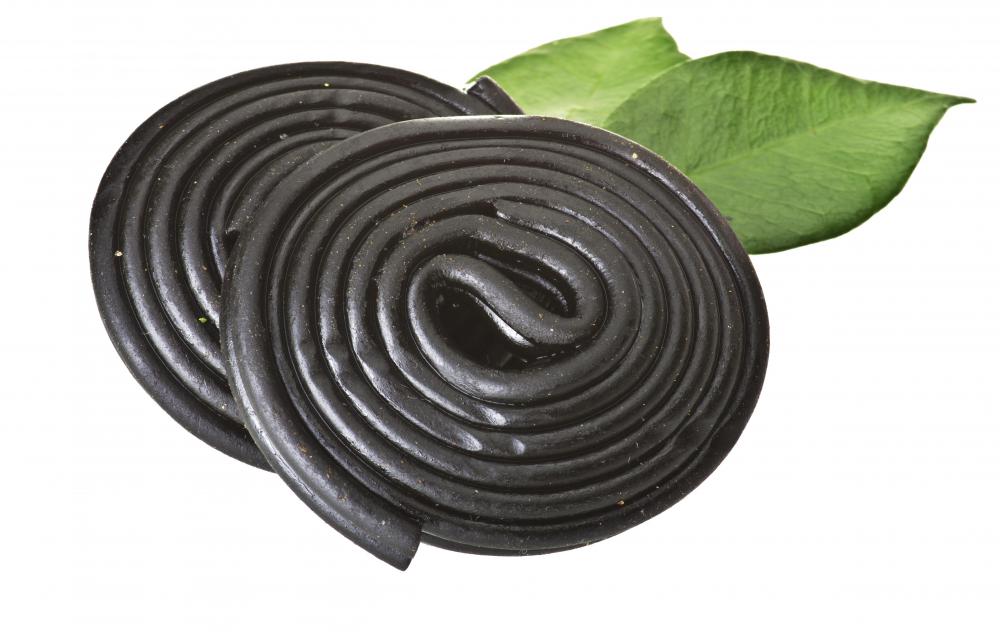At HomeQuestionsAnswered, we're committed to delivering accurate, trustworthy information. Our expert-authored content is rigorously fact-checked and sourced from credible authorities. Discover how we uphold the highest standards in providing you with reliable knowledge.
What is a Licorice Plant?
A licorice plant, scientifically known as Helichrysum petiolare, is an evergreen shrub that belongs to the family Asteraceae. It is a native plant of South Africa, but the species has become naturalized in the United States and Portugal. In the state of California in the United States, this species is registered as a weed. Other names used in referring to these plants include dwarf licorice plant, trailing licorice, and hottentot tea. It can tolerate drought and thrive in full sun to partial shade and in ordinary drained soil with a pH range of 6 to 7.5.
These perennial plants are tender, trailing, or mound-forming shrubs. When the licorice plant is grown as an annual plant, the stems can grow to a length of about 1.5 feet (0.45 m). The leaves that cover these stems are woolly and shaped like hearts. Foliage may vary in color from evergreen to silver-gray. This plant produces cream-colored flower heads if permitted to bloom in the later part of the growing season.

For propagation purposes, firm shoots can be cut at the roots and kept indoors from summer to winter. Replanting can be done in spring time. The flowers are sterile and cannot be used for producing seeds. As the blooms appear, they should be removed to allow more room for the growth of foliage. One of the cultivated varieties of the licorice plant is the silver mist.

The licorice plant requires very little maintenance. Its trailing habit makes it suitable for flowerbed borders, containers, and rock gardens. The color of its foliage makes it popular among gardeners and landscape artists. It can also be used to complement burgundies, purples, and blues in hanging baskets.
All parts of the licorice plant are toxic if swallowed. When handling the plant, allergic reactions and skin irritations may occur. Extreme caution must be practiced to avoid the sharp edges and spines. The pollen may also cause allergic reactions. Investigation of the essential oil has been conducted for properties believed to be anti-inflammatory, antioxidant, and anti-microbial.
Foliage of the licorice plant is sometimes eaten by caterpillars. To control these pests, caterpillars may be handpicked or Bacillus thuringiensis may also be applied. Rust and powdery mildew can sometimes occur. These conditions can be discouraged by preventing the leaves from getting wet during watering and thinning the stems to promote air circulation. Stems that are already severely infected should be cut off and destroyed.
AS FEATURED ON:
AS FEATURED ON:












Discussion Comments
My mom bought a small licorice plant which is sitting in a pot in the yard right now. It actually smells like black licorice and has dark purple leaves, it's quite amazing. It's growing very fast too, we're going to have to move it to a bigger pot or to the garden fairly soon because it's going to be too large for its current pot.
As far as I know, there are different types of licorice plants and they don't all look the same or smell the same. I guess we're lucky that we found one that actually smells like licorice. I love the scent of licorice.
@bluedolphin-- I think that most of the licorice we consume comes from the root of the licorice plant. After it is processed, licorice is not toxic.
It can cause side effects when consumed in large amounts. But confectioneries containing licorice contain very little amount of it in reality. Most of the licorice flavoring comes from licorice's distant relatives like anise and fennel.
So you don't have to worry about toxicity or anything of the sort if you consume licorice products moderately. Those with high blood pressure should however avoid licorice because it raises blood sugar.
How can all parts of the licorice plant be toxic? Licorice is used in candies, teas, liqueur and supplements.
Post your comments